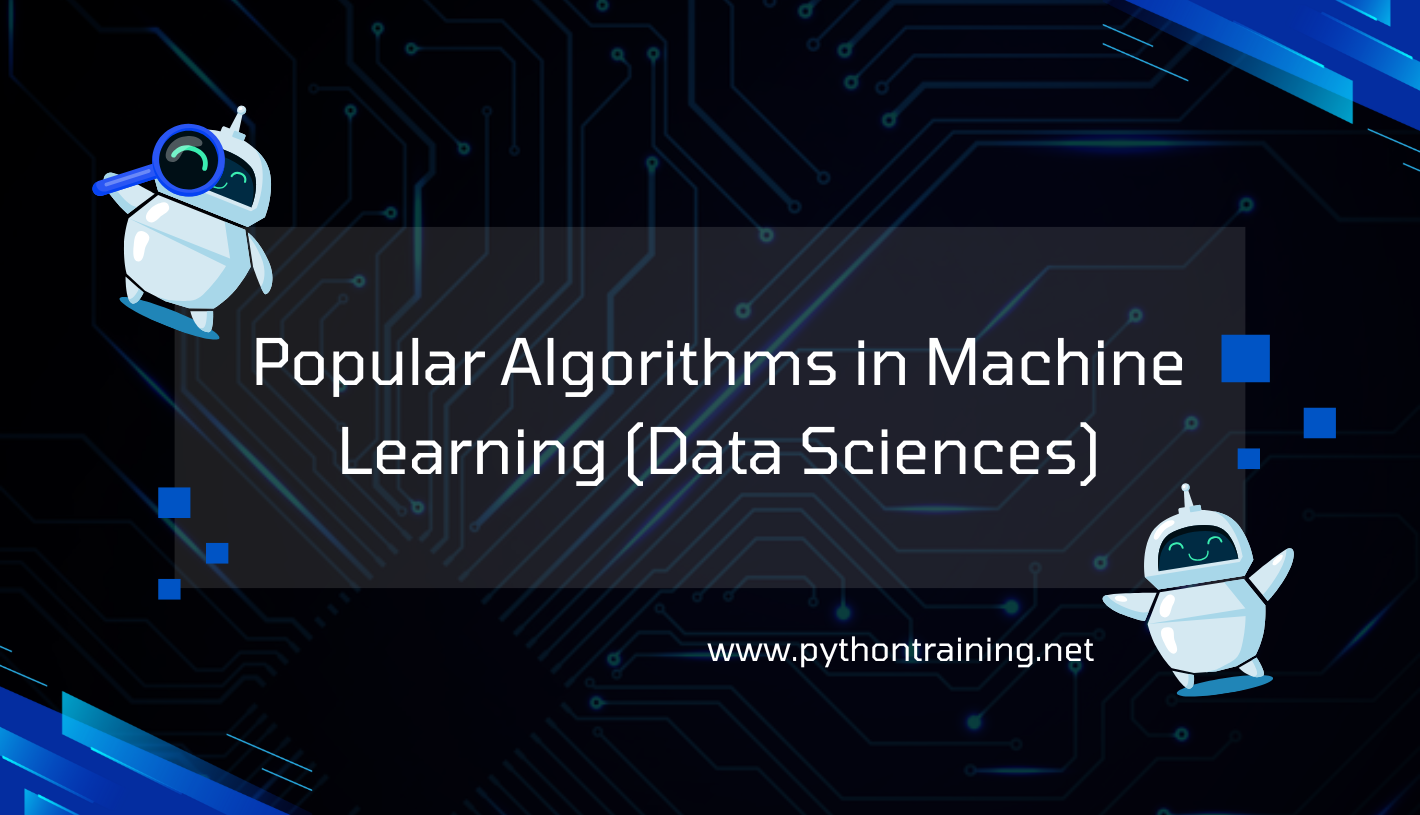Popular Algorithms in Machine Learning (Data Sciences)
We are living in a world where many manual tasks are now being performed automatically. Machine learning algorithms have enabled computers to carry out surgeries, play chess, and even become more personalized and intelligent. Technology is constantly evolving, and if we look at how computing has developed over the years, it’s easy to predict what’s to come next. In recent years, data scientists have developed powerful data crunching machines using advanced technologies. Here are some of the most common machine learning algorithms that are making data scientists’ lives easier.
1. Linear Regression
Linear regression is one of the most popular and widely used algorithms in machine learning. Predictive modeling often relies on minimizing model errors to make the most accurate predictions, sometimes at the cost of explainability. In this approach, algorithms borrowed from statistics are commonly used. Linear regression helps predict outcomes based on input data by fitting a linear relationship between variables.
2. Logistic Regression
Logistic regression is another widely used machine learning algorithm, particularly for binary classification problems (i.e., problems with two class values). It operates similarly to linear regression but with one key difference: the output is transformed using a logistic function. Logistic regression is effective when we need to classify data into two categories. It also performs better by eliminating irrelevant attributes and correlated features, making it faster and more efficient.
3. Support Vector Machine (SVM)
Support Vector Machine (SVM) is a powerful classification method that plots data as points in n-dimensional space (where n is the number of features). Each feature’s value corresponds to a specific coordinate, which helps to classify data. SVM uses hyperplanes or lines called classifiers to separate the data points on a graph. It is particularly effective for complex classification problems where the data is not linearly separable.
4. Linear Discriminant Analysis (LDA)
While Logistic Regression is limited to binary classification, Linear Discriminant Analysis (LDA) is more suited for multi-class classification problems. It is a linear classification algorithm that represents data by calculating statistical aspects in each class. LDA takes into account the mean value for each class and computes a discriminative value for prediction. It assumes that the data follows a Gaussian distribution, so it is important to remove outliers from the data beforehand to achieve optimal results.
Why Choose Pythontraining.net for Python Training?
Pythontraining.net (PTN) is known for its highly qualified professionals who bring years of experience in Data Sciences and Python training. PTN is considered one of the best Python training institutes in India. Our comprehensive training program includes hands-on projects that allow students to specialize and gain practical experience. We also have a strong placement record, helping students secure positions in top companies worldwide.
FAQs
- What is the difference between linear regression and logistic regression? Linear regression is used for predicting continuous values, while logistic regression is used for binary classification problems where the output is discrete (i.e., two class values).
- How does Support Vector Machine work? Support Vector Machine works by plotting data points in a multi-dimensional space, where each feature corresponds to a coordinate. It then uses hyperplanes to classify the data into different categories.
- What are the benefits of using Linear Discriminant Analysis? Linear Discriminant Analysis is useful for multi-class classification problems. It works by calculating the statistical properties of the data for each class and then predicting the class with the highest discriminative value.
- What type of problems can be solved using logistic regression? Logistic regression is primarily used for binary classification problems where the outcome variable has two possible outcomes, such as “yes” or “no”, “1” or “0”.
- How do machine learning algorithms improve with time? Machine learning algorithms improve over time by learning from new data, adjusting their models, and reducing errors in predictions, which leads to more accurate outcomes.
- Can I learn machine learning with Python? Yes, Python is one of the most popular programming languages for machine learning. It has a wide range of libraries like NumPy, Pandas, and Scikit-learn that are essential for implementing machine learning algorithms.
- What are the career opportunities after learning Python and Machine Learning? Learning Python and machine learning opens up various career opportunities in data science, artificial intelligence, web development, automation, and many more fields.
- Why is Pythontraining.net considered the best for Python training? Pythontraining.net offers expert instructors, comprehensive training programs, hands-on project experience, and high placement rates, making it one of the leading institutes for Python and data science training.
